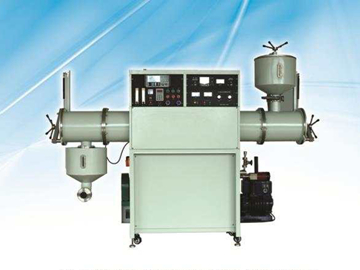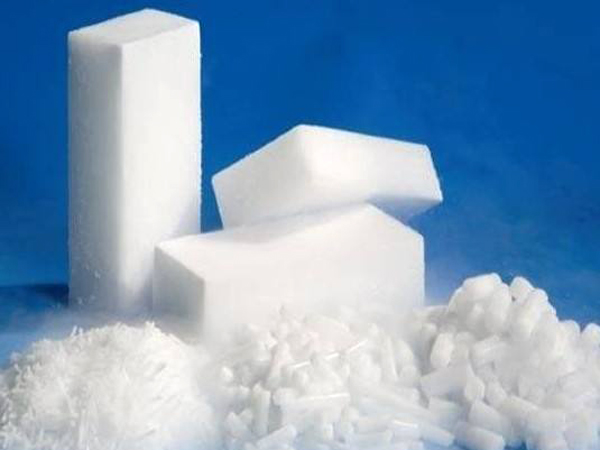LNG gas pressure regulator debugging and precautions
Sources:This site | Release date:
2018-04-11
| Browsing volume:
Key words:LNG gas pressure regulator debugging and precautions
LNG gasification pressure regulator is a natural gas supply system for small and medium-sized enterprises and large and medium-sized public users. The LNG gasifier, LNG unloader supercharger, BOG heater, EAG heater, water bath type electricity Heater, valve, pressure regulator, flow meter, shut-off valve, safety relief valve, odorant and other primary components, to provide users with a secure supply of gas.
One, lng gas pressure regulator equipment debugging
After debugging according to the user's parameters, it can be put into operation.
(1) Do not open the valve, open the valve easily damage the device!
(2) Do not take the pressure tube into the pipeline too high pressure if it is not removed (or closed), otherwise it will damage the pressure regulator or downstream pipeline equipment!
Before commissioning, all valves on the device should be closed.
Slowly open the inlet valve of the pressure regulating station to supply air to the equipment, open the front ball valve of the pressure gauge on the air intake manifold, and observe the pressure of the air supply. In order to avoid damage to the pressure gauge during the inflation process, the valve under the watch may be closed or slightly opened, and then fully opened after the pressure is stabilized.
Commission the first pressure regulating line. First, completely relax the set pressure adjustment bolts of the regulator, and fully tighten the shut-off valve and set the pressure adjustment bolts. Rotate the shut-off valve reset knob to reset the shut-off valve and turn it on. Open the front ball valve of the pressure gauge outlet pressure gauge and observe the change of pressure indication. Slowly open the inlet valve of the regulator and supply gas to the regulator until fully open.
Regulator:
(1) Inspect according to the as-built drawings and pressure regulator installation inspection specifications.
(2) understand the user gas properties, gas consumption and gas characteristics to determine the pressure setting.
(3) Carefully check the type and appearance of the regulator and check whether the technical parameters of the regulator are in accordance with the requirements of the design drawings. If the pressure regulator station still needs to inspect the leak alarm, fire extinguisher, anti-static equipment and other facilities.
(4) Check whether the pipeline is clean and whether there are any rust, dust, water and other impurities.
(5) Gas tightness tests must also be conducted when pipelines and pressure regulators are used for production
During the commissioning process, the outlet valve of the regulator should be closed. Then, follow these steps:
a. Set the cut-off pressure of the shut-off valve
Slowly tighten the adjusting bolt of the pressure regulator and pay attention to changes in the indication value of the pressure gauge, adjust the outlet pressure of the regulator until the cutting pressure of the shut-off valve is set, and slowly loosen the shut-off pressure adjustment bolt of the shut-off valve until the valve shuts off. In this case, the gas pressure at which the shutoff valve operates is set as the shutoff valve set cutoff pressure. Lock the adjustment bolt of the shut-off valve and the commissioning of the shut-off valve is completed.
b. Set the release pressure of the safety valve
The safe release valve has been set according to the user's requirements before leaving the factory. The site is generally not debugged. Just open the inlet ball valve of the safety relief valve and it is the safety relief valve in working condition. If the safety valve needs to be reset, it can be continued as follows:
Thoroughly loosen the regulator adjusting bolt and rotate the shut-off valve reset knob so that the shut-off valve is in the open state, open the discharge gas nozzle after the pressure regulator, discharge the pressure after the regulator, and close the discharge gas nozzle. Slowly tighten the pressure regulator pressure regulator bolts, adjust the pressure regulator outlet pressure to the safety valve to set the dispersive pressure relief. At this time, if the safety relief valve starts to disperse, tighten the safety relief valve adjustment bolt to the safety relief valve to stop Before deflation, if the safety relief valve is closed, loosen the safety relief valve adjustment spring until the safety relief valve is about to start dissipating. Then lock the adjustment bolt, that is, set the safety valve.
c. Set the regulator outlet pressure
Thoroughly loosen the regulator adjusting bolt, open the discharge nozzle after the pressure regulator, discharge the pressure after the regulator, close the discharge nozzle, then slowly tighten the pressure regulator adjustment bolt in the opposite direction until the pressure regulator The outlet pressure rises up to the outlet set pressure. Lock the regulator regulator bolts and adjust the regulator. When the air is exhausted by the exhaust nozzle, the outlet pressure gauge may fluctuate slightly due to the small flow rate. When the outlet valve is opened, the flow rate will automatically be eliminated when the flow rate increases.
Second, pressure regulating equipment debugging:
(1) Set the pressure, follow the high-low guidelines, and follow the steps one by one, namely: cut off the pressure - release pressure - operating pressure.
(2) After the pressure is set, it is necessary to check the closing pressure and verify that its function has reached the required value.
(3) Before the pressure can meet the requirements, open the outlet valve. Before this, do not open the outlet valve to prevent accidents.
(4) Precise instrumentation should be protected to prevent pressure fluctuations and damage the instrument.
(5) In the commissioning of 1+1 pressure regulating equipment, if continuous gas supply is required, the pressure shall be manually controlled through the bypass, the pressure regulating valve shall be manipulated by one hand, the pressure gauge shall be held by hand, and the pressure change shall be investigated at all times to maintain the outlet pressure at the required level. Within the pressure range, after the pressure setting of the pressure regulator is completed, slowly open the outlet valve of the pressure regulator, and then close the bypass valves after the pressure regulator 24 normally supplies the air.
(6) If the regulator adopts 2+0 opening and closing type, both lines need to be debugged, open all the way, close all the way (standby), and the pressure between the inlet and outlet valves should be vented in the reserve channel to avoid pressure regulator film and Springs are stressed and cause fatigue.
1. Check whether the pressure signals of the two regulators (or pilots) are correct. If the pressure signal tubes are connected after the work pressure regulator, correct connection is made.
2. The pressure regulating springs of the two pressure regulators are pressed to the pressure regulating and tensioning springs of the tight front pressure regulator (monitoring regulator) to make the rear pressure to the cutoff pressure, and the shut-off valve is commissioned.
3. Adjust the release valve.
4. Regulate the pressure-regulating spring before the pressure regulator (monitoring regulator), so that the intermediate pressure is about +10% of the outlet pressure setting.
5. After the pressure regulator (operating regulator) pressure regulating spring, so that the pressure after the pressure to the outlet pressure setting (at this time the pressure will rise to equal to the inlet pressure).
After the pressure regulator has been commissioned, look at the interfaces and the areas that have been loosened during the commissioning process with foaming agents. Whether gas leakage.
At this point, the device has been debugged and ready for operation.
Third, lng gas pressure regulator equipment operation
Read the operating instructions of the pressure regulating station's accessories for details. Operate the various parts of the pressure regulating station in the correct way.
If a valve is installed in the signal line, the valve should be opened before the equipment is put into operation. Otherwise, the regulator may not work, and high-pressure gas will directly enter the downstream pipeline, resulting in equipment damage!
The pressure regulator station shall check whether it has operating conditions before putting into operation: upstream and downstream pipelines shall meet the normal ventilation requirements; all sewage valves and gas release valves shall be closed; necessary fire-fighting tools shall be provided.
According to the determined process route, open the valve of the pressure regulating station inlet to the pressure regulator. If the outlet pressure of the pressure regulator meets the gas supply requirements, the outlet valve can be opened to the pressure regulating station to supply gas downstream of the pressure regulating station. For the two-way (2+1) pressure regulating station, after the main road is supplied with gas, the inlet and outlet valves of the auxiliary road are directly opened and put into standby.
When the branches of the pressure regulating station are suspended for use due to maintenance or calibration, the by-pass valve can be used to adjust the pressure of the downstream pipeline as a temporary emergency. The adjustment method is: Slowly open the cut-off valve, pay attention to the change of the indication value of the outlet pressure gauge, and the pressure of the back-stage pipeline should not exceed the outlet set pressure.
When using the bypass of the pressure regulating section, the site should be guarded by a dedicated person.
Third, security measures
(1) Spray warning signs on the surface of equipment enclosures or cabinets, such as prohibiting pyrotechnics, preventing bumps and equipment numbers, or warning signs.
(2) Check and measure whether the electrostatic guidance device meets the requirements of the parameters and whether the instruments at all levels are operating normally
(3) In the process of debugging, smoking is strictly forbidden to prevent the generation of static electricity, stop collisions, knock pipes and equipment;
(4) The valve should be open slowly and must not be opened.
(5) The timing of the emergency shut-off valve is checked and maintained. The shut-off valve is tested, checked and maintained not less than once per week.
Gas meter is not free to shift, if you must move, please be sure to contact a dedicated staff to come to your door. The gas meter needs to be unified according to the design drawings, and the user cannot modify it at will. The reform must comply with the following safety conditions: The gas meter must not be closed to prevent the accumulation of gas; the watch must be kept at a certain distance from the wires and pipes, etc. The device must also be considered for ease of maintenance and other factors. National regulations stipulate that gas pipelines, gas meters, stoves, and water heaters cannot be installed in the bedroom. Gas meters cannot be installed in toilets or bathrooms. If you need to change your housing structure and change pipeline gas facilities, please contact the gas modification project. The center applies for professional design and construction for you. The movement of the gas meter should follow the principle of safe leaderboard and concise lines as far as possible.
Article Link: China Environmental Online
Please indicate the source of the reprint(LNG gas pressure regulator debugging and precautions:/companynews/422)
Relevant articles
Related products
-

HD-2 Vacuum Plasma Seed Processor
-

Gene-Storage Tank
-
![MVE CryoCart MVE CryoCart]()
MVE CryoCart
-

Oxygen for Medical Use
-

Argon for Industrial Use
-

Dry Ice
-

Carbon Dioxide for Medical Use
-

Nitrogen for Medical and Industrial Use